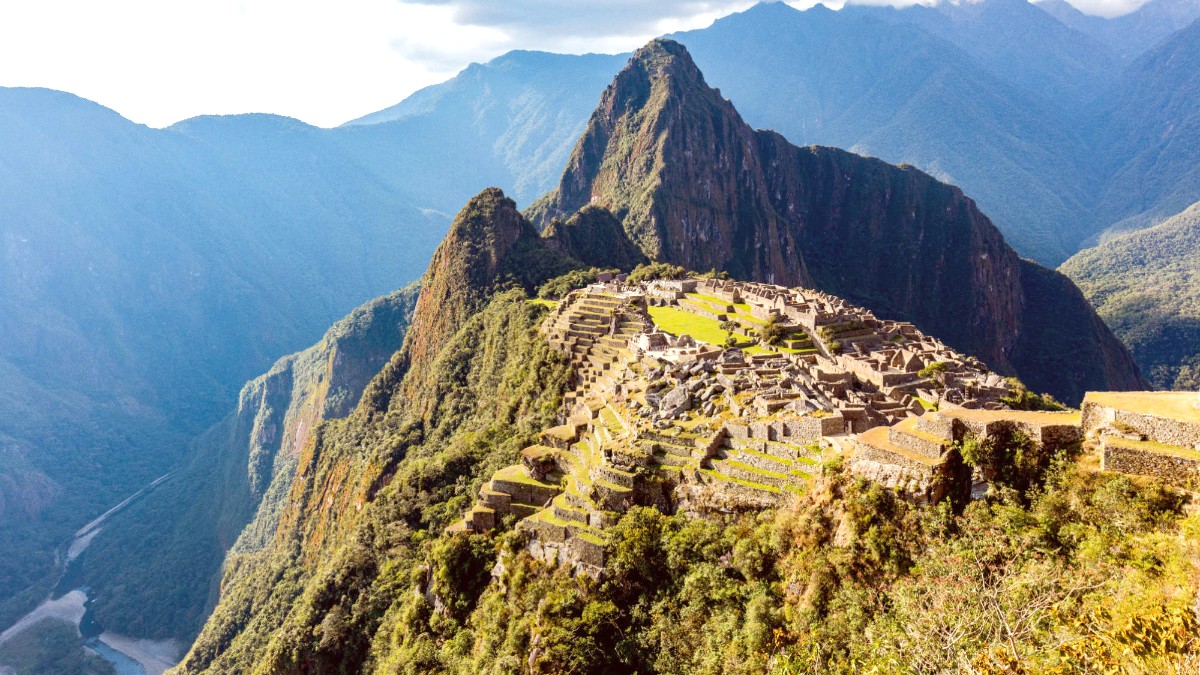
Cuzco And The Sacred Valley, Peru
Ollantaytambo, situated in the Sacred Valley, experiences two distinct seasons: a dry season and a wet season. Each offers unique travel conditions.
The Andean altitude influences the Sacred Valley's climate, with noteworthy differences between daytime and nighttime temperatures.
Your travel dates influence crowd levels, prices, and weather conditions.
Ollantaytambo does not experience monsoons or hurricanes. However, preparation for specific conditions, like cold nights or afternoon thunderstorms, is advised.
Dry Season Peak
Best weather for hiking and exploration; minimal rain, clear skies. Ideal for Inca Trail and Machu Picchu visits.
Most crowded time, higher prices for lodging, tours, and flights. Competition for tickets to popular sites is intense.
Balance of Conditions
Pleasant weather with comfortable temperatures. Fewer tourists than peak season, better availability for tours and lodging. Lush landscapes after the wet season.
Occasional rain showers can occur, especially in April and October. Prepare for some precipitation.
Wet Season
Fewer tourists for a quieter experience. Lower prices for many services. A more authentic local atmosphere.
Frequent rain is common, especially afternoons. Inca Trail closes in February for maintenance. Clouds can obscure views of mountains and ruins.
The dry season (May-October) presents the most favorable conditions for stable trail surfaces and clear, unobstructed views for activities like the Inca Trail or Salkantay. Trekking during the shoulder season finds fewer people, though some mud might be present.
Cultural sites are open year-round. The shoulder season offers a compelling balance of comfortable weather and fewer crowds, enabling a relaxed pace. For clear skies and bright views, the dry season is superior.
During the wet season, plan outdoor activities for mornings to avoid afternoon downpours.
For high season travel, book tours and accommodations well in advance.
Day-to-night temperature shifts require adaptable clothing strategies.
During the wet season, be aware of potential landslides on less-maintained roads.
The Inca Trail closes in February for maintenance; consider alternative treks.
Most travelers experience a straightforward entry process into Peru. Requirements vary by nationality, so review information specific to your home country.
Citizens of the United States, Canada, EU, Australia, and New Zealand generally do not need a visa for tourist stays, typically up to 90 or 183 days. Immigration usually issues a tourist card (TAM) upon arrival.
Present these documents to Peruvian immigration upon arrival. Keep your tourist card (TAM) safe throughout your trip; you must surrender it upon departure.
Entry tickets for Machu Picchu are required and should be booked well in advance, especially during high season. Different circuits exist within the site, offering varying access to areas like Huayna Picchu or Machu Picchu Mountain. Confirm your desired circuit when booking.
A special permit is necessary for the Classic Inca Trail (the 4-day trek). These permits are limited and sell out many months in advance. Inca Trail permits are non-transferable and tied to your passport information.
Peru does not impose standard entry fees for tourists at the border or airport.
Losing the TAM (Tourist Card) can lead to delays and a required visit to the immigration office.
While treks like Salkantay or Lares do not need permits, booking via a licensed agency is generally wise.
No specific vaccinations are legally required for entry for most travelers, unless arriving from a yellow fever risk country.
Consult a travel health professional for recommended vaccinations before your trip.
Managing finances in Ollantaytambo is straightforward. Peru presents travel experiences suited for diverse budgets, from economical to indulgent.
The Peruvian Sol (PEN) is the official currency (S/.). Major foreign currencies, notably US Dollars (USD) and Euros (EUR), are exchanged at banks, exchange houses, and some hotels.
Daily expenses fluctuate based on individual travel styles, from budget-conscious to luxury experiences.
Your well-being during your visit is important.
A Yellow Fever vaccine is needed if arriving from a country with transmission risk. Check latest government travel health agency requirements.
Consult a travel doctor 4-6 weeks prior for Hepatitis A, Hepatitis B, Typhoid, Tdap, MMR. Rabies for long-term or animal contact travelers.
Ollantaytambo (2,792m/9,160ft) may cause headache, nausea, fatigue. Acclimatize gradually, hydrate, avoid alcohol/heavy meals. Coca tea or prescription Acetazolamide (Diamox) might assist.
Sunburn: High altitude increases UV exposure. Use High SPF sunscreen (30+), Wide-brimmed hats, and sunglasses.
Traveler's Diarrhea: Drink only bottled or purified water. Avoid unpeeled fruits and uncooked vegetables. Eat hot, freshly cooked food from reputable establishments. Frequent hand washing is important, especially before eating.
Access to Healthcare: Major hospitals are in Cusco. Ollantaytambo has a basic health center for minor issues. Pharmacies are available for common over-the-counter medications.
Emergency Services: Police: 105, Fire: 116, Medical: 107. Response times vary outside major cities.
Tap water is generally unsafe. Always consume Bottled water. Confirm bottles are sealed. Consider a Portable water filter or purification tablets for trekking or if bottled water is unavailable.
Select restaurants with high turnover. Exercise caution with street food; ensure it is cooked fresh and hot. Observe vendor cleanliness.
Ollantaytambo is generally safe. Petty crime (pickpocketing) occurs in crowded areas, especially in larger cities like Cusco. Use common sense: avoid walking alone at night in poorly lit areas, do not display valuables, remain aware of surroundings.
Peru is in an active seismic zone. Landslides and mudslides are more common during the wet season (November-April), potentially affecting roads and trails. Flooding can also occur in low-lying areas near rivers during heavy rains.
Travel insurance is strongly advised. Seek policies covering medical emergencies, evacuation, trip cancellation, and luggage. Compare options to find suitable coverage like World Nomads, SafetyWing, or Insubuy.
Medical emergencies, emergency evacuation, trip cancellation/interruption, lost/delayed luggage, and adventure sports if relevant.
Police: 105, Fire Department: 116, Ambulance/Medical Emergency: 107. Tourist Police (POLTUR) Cusco: +51 84 249633.
Keep contact information for your country's embassy or consulate in Lima. They assist with lost passports and other consular services.